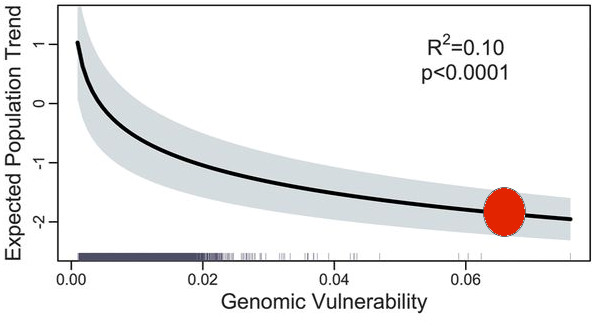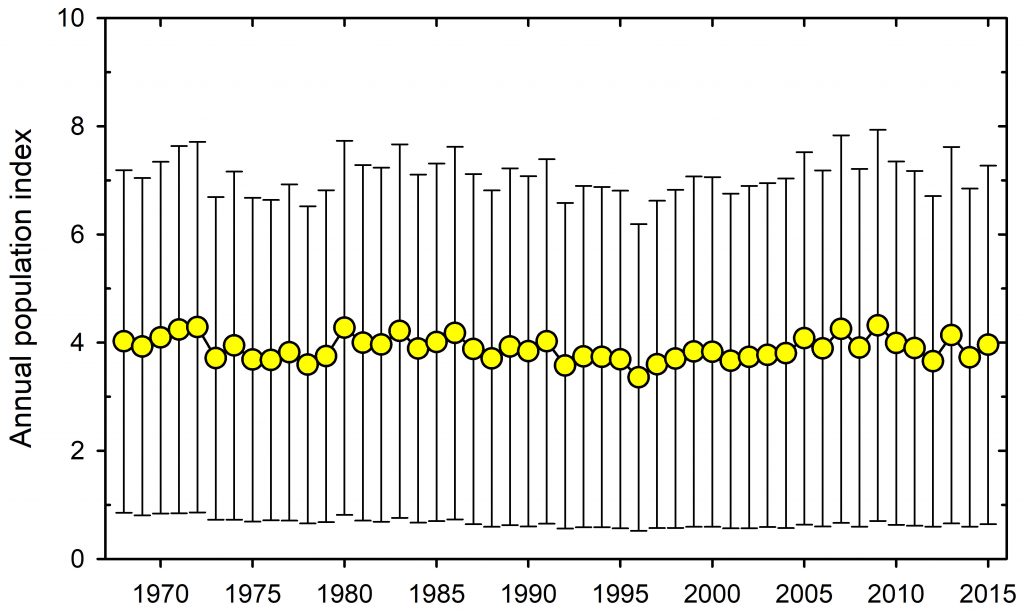Many people in western societies like to keep cats as pets, and with that simple observation we run into two problems that require resolution. First, cats are killers of wildlife, particularly birds but also an array of other small prey. Most people do not believe this, because cats are adored and make good, if somewhat disinterested pets. So, my first point might be that if you think cats are not killers, I invite you to keep another cat like a mountain lion for a pet. But we need some data on the kill rate of cats. Before we begin this search, we should note that cats can be kept inside dwellings or in cat runs with no access to birds or other prey. If this is the case, no problem exists for wildlife, and you can skip to the bottom of this blog for one other issue to recognize.
How much mortality can be traced to cats roaming out of doors? This will include normal house cats let out to roam at night, as well as wild cats that have been discarded by their owners into the wild. There is extensive literature on cats killing birds. If you want a brief introduction Greenwall et al. (2019) discuss a nesting colony of Fairy Terns, a threatened species of Australian seabird, along a beach in southwestern Australia. With detailed observations and photographic data, they recorded the complete failure of all 111 nests in this colony with the loss of all tern chicks in the early summer of 2018. The predator was a single desexed feral cat. Many local governments allow the capture of feral cats with the protocol that they are desexed and then released back into the environment. Clearly desexing and release does not remove the problem.
The domestic cat has been spread world-wide, so that the cat problem is not a local one. Li et al. (2021) completed a survey of feral cat kill rates in the eastern part of China and found that the minimum annual loss of wildlife to feral cats was in the range of 2.7-5.5 billion birds, and 3.6-9.8 billion mammals, as well as large numbers of amphibians, reptiles, and fish. In gardens in Western Europe cat predation on ringed birds studied with precise data showed that up to 25% of dead birds were killed by cats, but these data varied greatly among species (Pavisse et al. 2019). For the European Robin which often feeds on the ground 40% of all ringed birds were killed by cats, for the European Greenfinch the figure was 56% of ringed birds killed. These are just two examples of an extensive literature on cat kills going back many years (Calvert et al. 2013).
What can we do about this predation? As with too many conservation issues the answer is simple but difficult to implement: Ban all cats from free-ranging unless they are on a leash and under control. Keep cats in the house or in special cat runs that are confined outdoors. Ban completely stupid programs of catching feral cats, sterilizing them, and releasing them back to the wild to continue their killing. Cats may make marvellous pets but need to be kept indoors. Many people would support these measures but many cat owners would disagree about such measures. Some progress is being made in urban environments in which some suburbs do not permit cats to roam freely.
Feral cats are a serious issue in Australia because they attack many threatened birds and reptiles (Doherty et al. 2019). In this case a federal environmental policy to kill 2 million cats is popular but from a conservation viewpoint still a poor policy. We do not know if killing 2 million cats is too much or too few, and without specific goals for conservation and careful monitoring of bird populations widespread killing my not achieve the goal of protection for threatened species. Eradications of cats on islands is often feasible, but no mainland eradication is currently possible.
As conservation biologists know too well, when humans are the problem, wise policies may not be implemented. So, the second issue and the bottom line might be to consider the human costs of cat ownership. Adhikari et al. (2020) report a highly significant association between the risk of dying from colon cancer and cat ownership. These results are not confounded by sedentary lifestyle, cigarette smoking or socio-economic status. In a similar study Adhikari et al. (2019) found that living with a cat significantly increased the death rate from lung cancer among women. The cause of these associations cannot yet be deciphered but are postulated to result from mycotoxins, toxic secondary metabolites produced by fungi (moulds) in cereal crops used in cat food. Aflatoxin is a mycotoxin that produces well-known chemicals that are seriously toxic to animals and humans.
These kinds of studies of associations arising from surveys can be tossed off by the typical comments ‘these-things-do-not-concern-my cats’ or ‘that there is no proof of the exact cause’ so if you are concerned you might investigate the literature on both mycotoxins and the diseases that cats carry.
It is up to humans to solve human problems, but up to conservation biologists to point out the detrimental effects of household pets and their feral cousins on wildlife. The present situation is a complete policy failure by governments at all levels. Good science is relatively easy, good policy is very difficult.
Adhikari, Atin, Adhikari, A., Jacob, N. K., and Zhang, J. (2019). Pet ownership and the risk of dying from lung cancer, findings from an 18 year follow-up of a US national cohort. Environmental Research 173, 379-386. doi: 10.1016/j.envres.2019.01.037.
Adhikari, Atin, Adhikari, A., Wei, Y. D., and Zhang, J. (2020). Association between pet ownership and the risk of dying from colorectal cancer: an 18-year follow-up of a national cohort. Journal of Public Health 28, 555-562. doi: 10.1007/s10389-019-01069-1.
Calvert, A.M., Bishop, C.A., Elliot, R.D., Krebs, E.A., Kydd, T.M., Machtans, C.S., Robertson, G.J., 2013. A synthesis of human-related avian mortality in Canada. Avian Conservation and Ecology 8: 11. doi 10.5751/ACE-00581-080211.
Doherty, T.S., Driscoll, D.A., Nimmo, D.G., Ritchie, E.G., and Spencer, R. (2019). Conservation or politics? Australia’s target to kill 2 million cats. Conservation Letters 12, e12633. doi: 10.1111/conl.12633.
Li, Yuhang, Wan, Yue, Shen, Hua, Loss, S.R., Marra, P.P., and Li, Zhongqiu (2021). Estimates of wildlife killed by free-ranging cats in China. Biological Conservation 253, 108929. doi: 10.1016/j.biocon.2020.108929.
Greenwell, C.N., Calver, M.C., and Loneragan, N.R. (2019). Cat Gets Its Tern: A Case Study of Predation on a Threatened Coastal Seabird. Animals 9, 445. doi: 10.3390/ani9070445.
Pavisse, R., Vangeluwe, D., and Clergeau, P. (2019). Domestic Cat Predation on Garden Birds: An Analysis from European Ringing Programmes. Ardea 107, 103-109. doi: 10.5253/arde.v107i1.a6.

